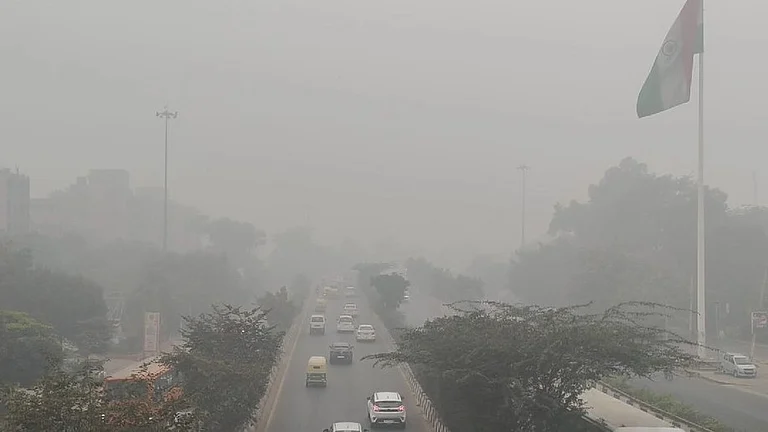Delhi’s AQI slips to ‘poor’ for first time since June.
Experts cite weak winds, monsoon withdrawal, and festive emissions as triggers.
Government declares new “Reserved Forest” to boost green cover and air quality.
Delhi’s Clean Air Streak Ends as Pollution Rises Ahead of Diwali — Here’s Why
Delhi’s clean air streak breaks as pollution levels rise ahead of Diwali
Delhi’s streak of maintaining clean air has been halted ahead of Diwali with Centre’s Air Quality Early Warning System (EWS) predicted the Air Quality Index to slip into “poor” category this week.
On the morning of October 12, the national capital registered an AQI of 201, marking the first instance of “poor” air quality in the city since June 11, when Delhi recorded an AQI of 245, according to HT.
“Delhi’s air quality is very likely to be in the ‘poor’ category from October 14 to 17. According to the EWS predictions, outlook for the subsequent six days shows that the air quality is likely to be in the ‘poor’ to ‘very poor’ category.
The 24-hour average AQI was recorded as 189 at 4 pm. This was up 22 points from an AQI of 167 (moderate) on October 12.
CPCB categorises air quality as “good” when the AQI is between 0 and 50, “satisfactory” when it falls between 51 and 100, “moderate” between 101 and 200, “poor” when it hovers between 201 and 300, “very poor” when it falls between 301 and 400 and “severe” when it is between 401 and 500.
According to HT, the national capital experienced clean air for 124 days straight—recording 77 days of “satisfactory” air and 47 days of “moderate” air since June 11. Experts say that the monsoon withdrawal, falling temperatures, onset of stubble burning and festive emissions could have led to the beginning of smog season.
Reasons Behind the Smog
Elaborating on the issues that Delhi is facing, Mahesh Palawat, Vice President at Skymet meteorology told HT that wind speed has reduced, oscillating between 6 and 10 km/hr through October 20.
He further added that the wind direction is westerly to northwesterly, with expected marginal stubble intrusion. “We don’t expect significant change in terms of weather, with similar wind direction and low wind speed to persist,” Palawat added.
Citing data from the Decision Support System (DSS), a model which calculates the estimated contribution of sources of pollution of Delhi’s PM 2.5, HT reported that the estimated contribution of sources of pollution Delhi’s PM 2.5 showed that stubble burning contributed to just 0.62% of Delhi’s PM 2.5 concentration on October 13—up slightly from 0.24% the previous day. This indicated that contrary to popular belief, stubble burning is not behind the spike in pollution.
Delhi Reserves Forest Land
Delhi Chief Minister Rekha Gupta wrote in a post on X that the state government has declared 41-kilometer area of the Southern Ridge as “Reserved Forest” in order to significantly increase Delhi’s green cover and improve air quality.
Meanwhile, the Supreme Court indicated lifting restrictions on the bursting of green firecrackers in the national capital, reported ANI.
The top court had permitted the manufacturing of green firecrackers in Delhi on September 26, subject to the condition that they will not be sold in the NCR.

